9:00. A visit to the coolest part of the harbour
One cannot visit Vigo without visiting the port. This vast quay has transformed the city and its image, bringing a special personality to it.
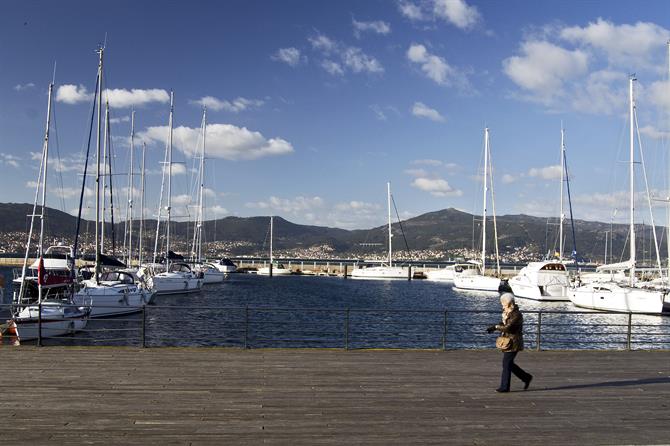
The most charming part of the port is the area around the Paseo de As Avenidas, between the Muelle de Transatlánticos and the Plaza de la Estrella. The Swimmers, two enormous bronze sculptures by Fancisco Leiro, give this urban area an original and authentic sea vibe.
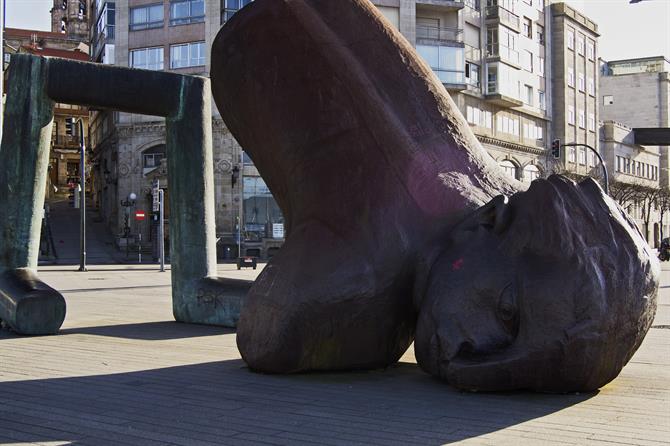
It's a priceless experience to start the day with a walk alongside the sea, but it gets even better when you're in the right company. Situated outside the Real Club Nautico is a statue of the famous author Jules Vernes, seated upon a chair of wild octopus legs. Vernes visited Vigo in 1878 and 1884 and declared his love for the Galician city in one of his books. In the novel Twenty Thousand Leagues Under the Sea, captain Nemo uses the treasures of the galleons that sunk during the battle of Vigo Bay to finance his adventures.
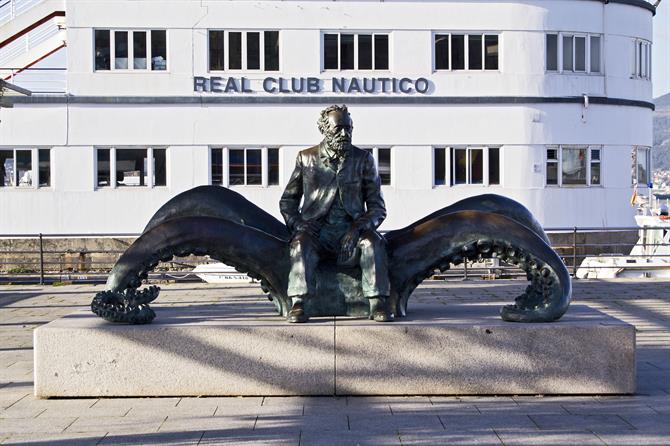
If you get hungry during all of the wandering and daydreaming of fantastic adventures à la Jules Verne, any of the many cafés along Montero Río would be the perfect place to rest and restore your energy. This pedestrian boulevard with lots of parks and other green elements is situated between the main street of the centre and the marina. Pay special attention to the beautiful buildings by the side of the tidal river: they will remind you of Barcelona in the 19th century.
It's definitely worth coming back to this area at dusk, especially in summer. You can enjoy a cocktail at one of the exclusive bars, or simply enjoy this amazing boulevard that shows a more delicate and refined side of Vigo.
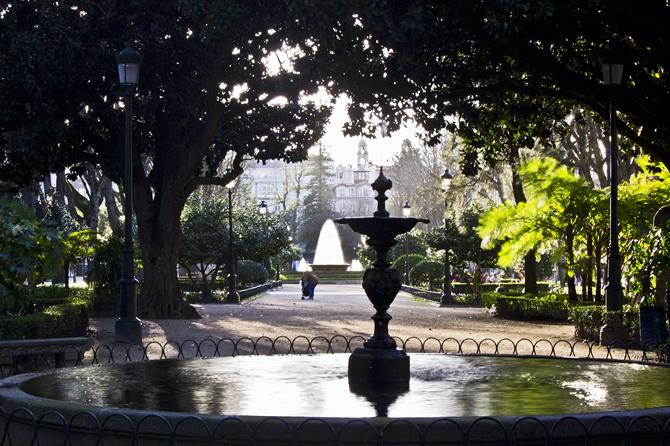
11:00. Taking in the old character of Vigo: el Berbés and the fish auction
A little way past the Muelle de Transatlánticos you find el Berbés, the town's old sailors' district. Ironically, when the harbour expanded it did so at the expense of el Berbés, and the place that once was the heart of the port was forgotten. The fish auction is only a stone's throw from the neighbourhood. It is the leading fish market in Europe because of the large volumes of fresh and frozen fish that are unloaded and sold there.
The constant hustle and bustle of the market is strongly felt in the bars on the other side of the street as well. Das Almas Perdidas is a bar with an almost mythical status, where you can find among its patrons, sailors enjoying the collection of liquors, port employees having their daily coffee, tourists tasting the vermouth and people from all walks of life trying a little bit of everything.
The port is a amazing and fascinating corner of Vigo, and you can discover all of its facets thanks to the guided tours organized by the Autoridad Portuaria (only in Spanish).
13:00. Some oysters in the old city centre
You can enter the old city centre by two routes. The fastest one is to walk along the Rúa Real from el Berbés, but you can also take a more scenic route by walking across the footbridge that connects the shopping centre A Laxe with the da Pedra market. Sea views are guaranteed!
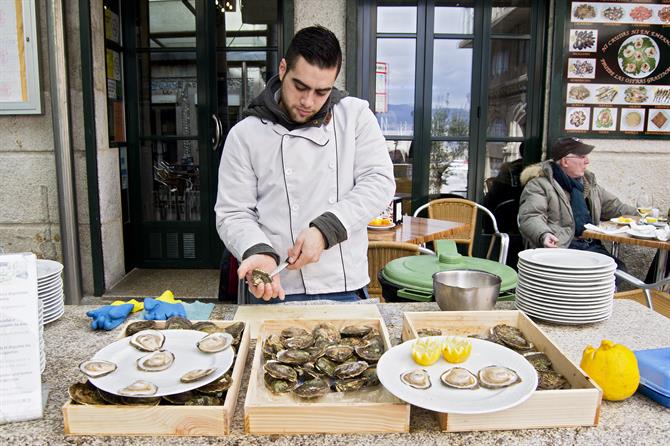
You can try one of Vigo's delicacies at one of the many street stalls next to the market: the Arcade oysters. Sampling them is almost - to quote Cunqueiro, a famous Spanish writer who spent a lot of time in Vigo - a spiritual act.
This street is called Pescadería, although the locals call it Rúa das Ostras (Oyster Street). These clams ( and aphrodisiacs) are found and harvested in Arcade, a small town at the estuary of the Vigo river. for just 15 euros you can buy a dozen oysters and enjoy an experience of culinary spirituality.
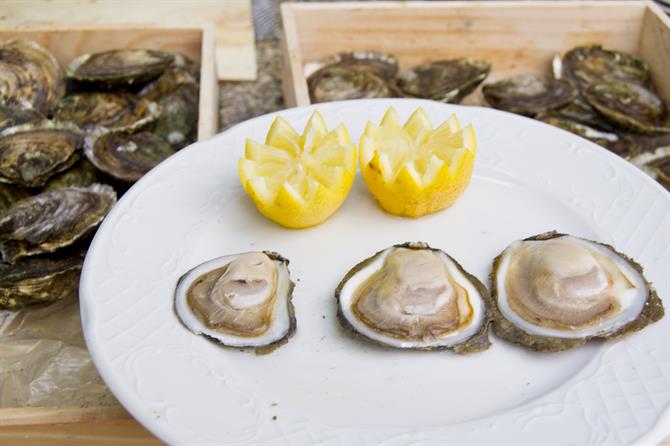
15:00. Following in the footsteps of Street Art
Throughout the city you can find more than a dozen walls and facades that have been decorated with graffiti and murals in different styles. They give Vigo the vibe of an avant-garde, urban art capital, portraying it as a young and metropolitan destination.
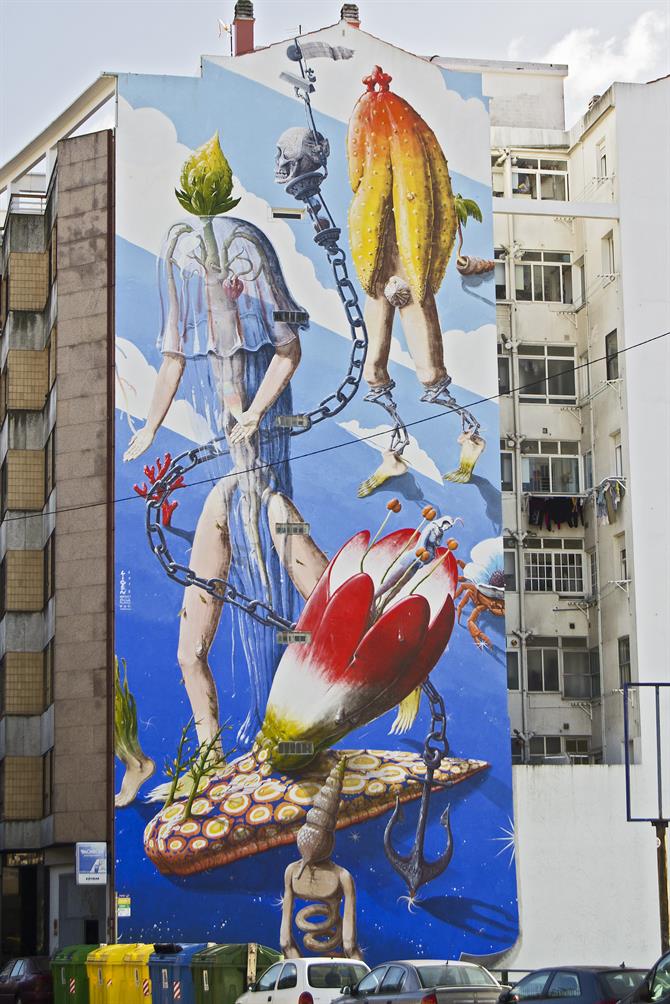
The same spirit is present at the free festival O'Marisquiño, one that can't be missed by urban art lovers. O'Marisquiño is skateboarding, acrobatics, trial, mountain biking, concerts and a lot more. It is celebrated every year in the port area.
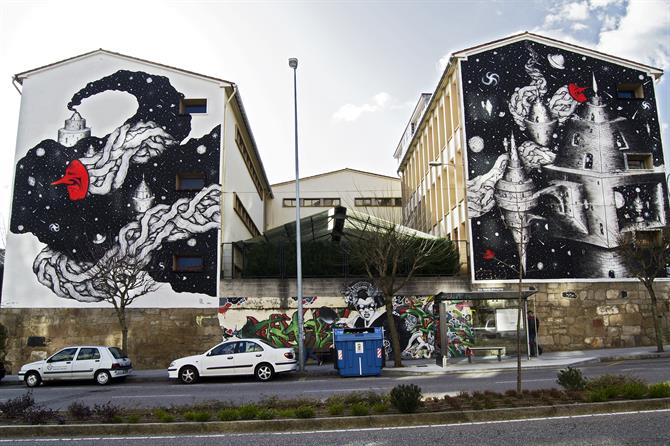
16:00. Visiting museums
Vigo surprises many of its visitors with the broad choice of museums on offer. The city had close relationships with some of Galicia's most important artists of the past century. One of them is Laxeiro, a true genius with a brush and a palette. A museum that displays his works and a Laxeiro Foundation are both located in Vigo.
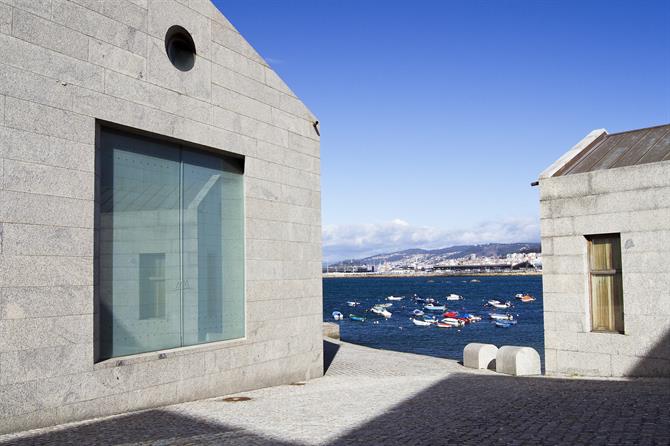
However, the most fascinating museum has nothing to do with painting. In Alcabre, located between two small and beautiful beaches and next to the ocean, an astounding building stands tall: the Museo do Mar (Museum of the Sea). It used to be an old canning factory. Its lighthouse, jetty and various ships can still be seen at the museum, which was designed by the architects César Portela and Aldo Rossi.
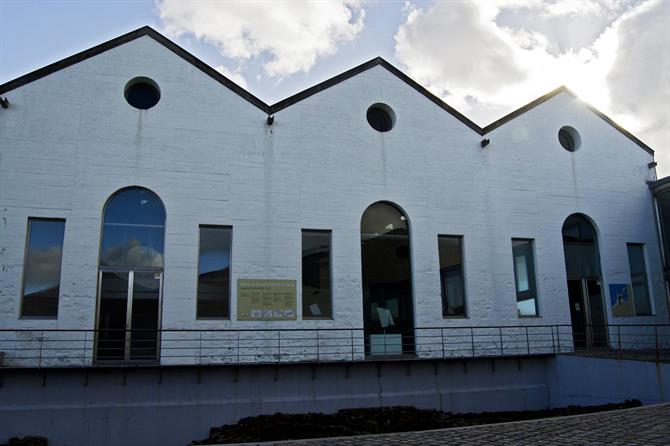
The museum has its own aquarium and a restaurant where you can taste the best seafood while you enjoy the amazing view of the Cíes Islands. In addition, the museum is very close to Samil beach, the biggest and best known beach of Vigo.
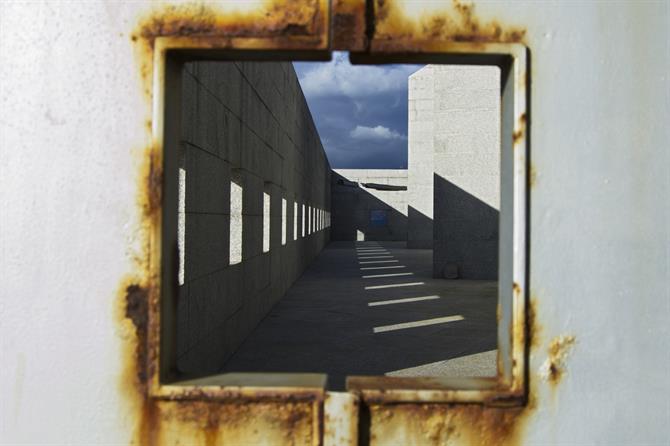
Another artistic centre which is worth a visit is the Museo de Arte Contemporáneo (the Marco, the Contemporary Art Museum), located in what used to be the Palacio de Justicia (Palace of Justice). The building doubled as the municipal prison, which explains the hexagonal ground floor and the panoptical design of the building.
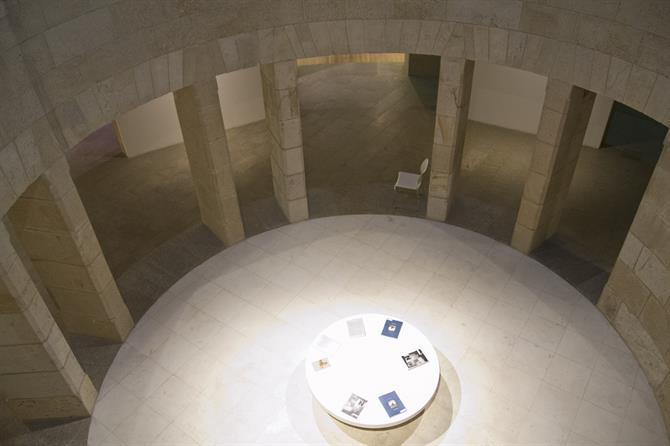
The Marco is open from Tuesdays to Saturdays (including holidays) from 11:00 to 14:30 and from 17:00 to 21:00. On Sundays it only opens in the morning (from 11:00 to 14:30). It's located in the centre of Vigo, in the Rúa Príncipe, a wide pedestrian street that is Vigo's most important shopping hub (and probably the most important of Galicia as well).
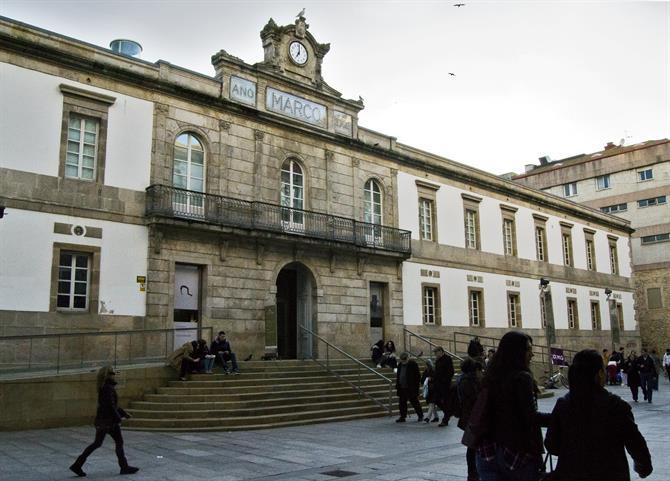
18:00. Poetical lookout points along the river
Vigo is a bit like Rome: a city of hills. It is surrounded by various hills, and from all of them you can enjoy a breathtaking view over the beautiful river. Two of them are the Monte do Castro and the Monte da Guía.
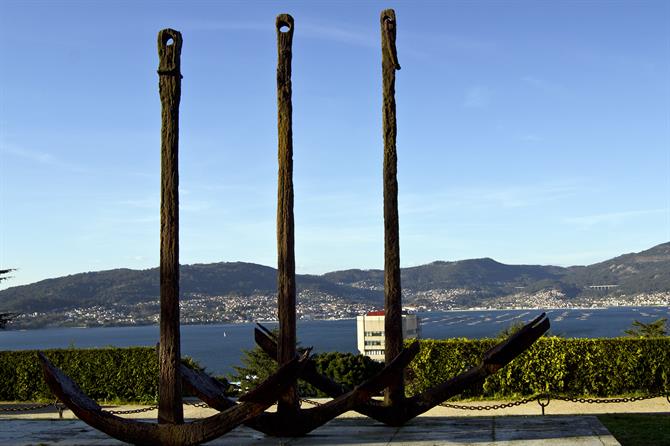
You can reach the Monte do Castro on foot because it is right in the middle of the city centre. When you climb it from the west side you will stumble upon a small, reconstructed Celtic site. Before reaching the top you will pass by three giant anchors and a cannon that were found at the bottom of the river. They are a reminder of the famous Battle of Vigo Bay where the Spanish-French fleet suffered a great defeat.
At the top of do Castro you can visit the remains of an old fortress and its gardens, and you can enjoy incredible views over Vigo Bay.
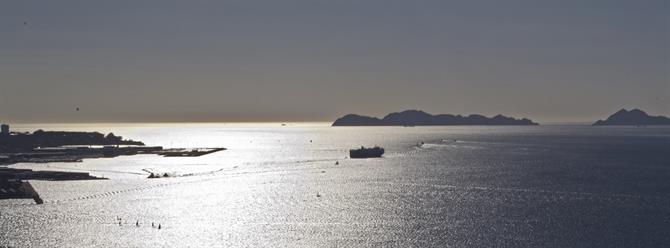
A bit further down the road, in the Teis neighbourhood, you can walk up the Monte da Guía. The climb is more than worth it: you get spectacular panoramic views of the river with the Cíes Islands in the background.
There are other lookout points all around the city. To get a different perspective you can go to Cesantes, a municipality next to Redondela. From that vantage point you can admire the Rande bridge and the San Simón Island in all their glory.
Along the river and at lookout points, you can read romantic verses by two famous Galician poets of the Medieval Ages (Mendinho y Martín Codax). And it is true that the landscape seems to wake up the poet in every traveller who passes.
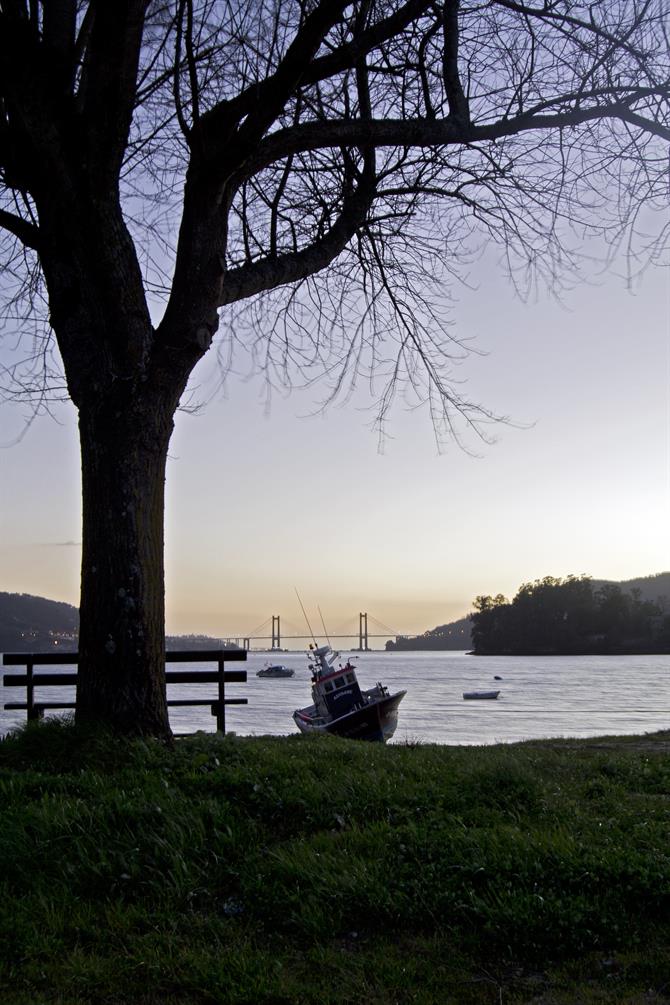
20:00. Enjoying the reborn historical centre
Nowadays, the oldest part of the city is very popular. For a long time the locals avoided the city centre, but now they cannot get enough of it. The absence of the usual glamour that you find in other Galician cities gives Vigo a special character and a unique atmosphere. Vigo also has one of the most beautiful squares of Spain: the Plaza de la Constitución.
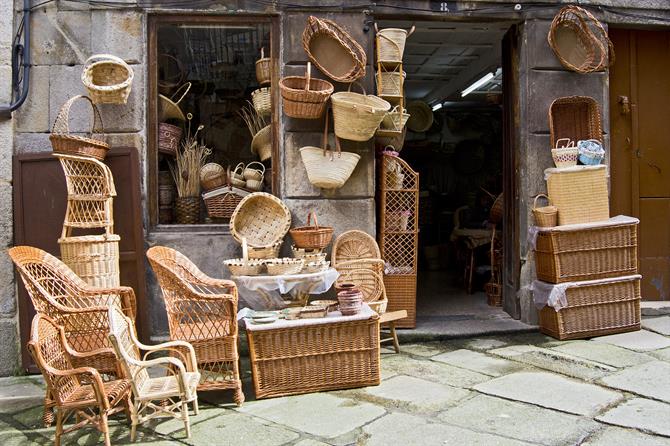
The city centre has been transformed over the years, which is especially notable in the upper part. What used to be a sober neighbourhood is now a vibrant part of town with a lot of entertainment for locals and visitors alike.
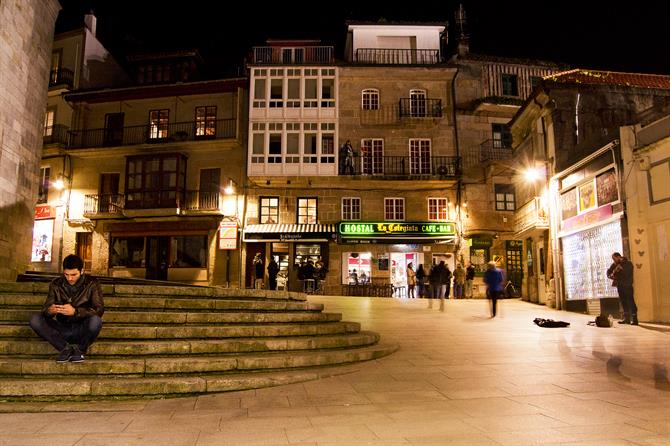
The new tapas bars, restaurants and pubs prosper and exist side by side with the old shops that have been in the neighbourhood for years: small bookshops, historical bars and the last cesteiras (weaving workshops that make artisan baskets).
24:00. Partying in another cool part of town
El Areal, more exclusive and up market, is another great neighbourhood to go out and have some tapas with the locals. Another alternative for after midnight is Churruca, an area with an almost mythical status when it comes to partying. La Iguana is one of the most iconic clubs of the neighbourhood, and La Fábrica de Chocolate is well on its way to become one too. One thing is certain: the nightlife in Vigo is very varied and won't disappoint anyone.
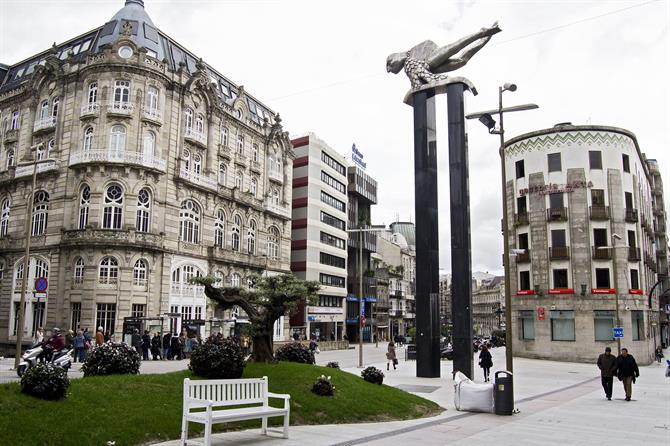
Vigo is a dynamic city, old and young at the same time, offering entertainment for everyone. So why don't you pay it a visit the next time you go to Spain?
Want to visit Vigo or any other place in Galicia? We've got you covered! Here is our selection of holiday homes in the beautiful Galicia.
